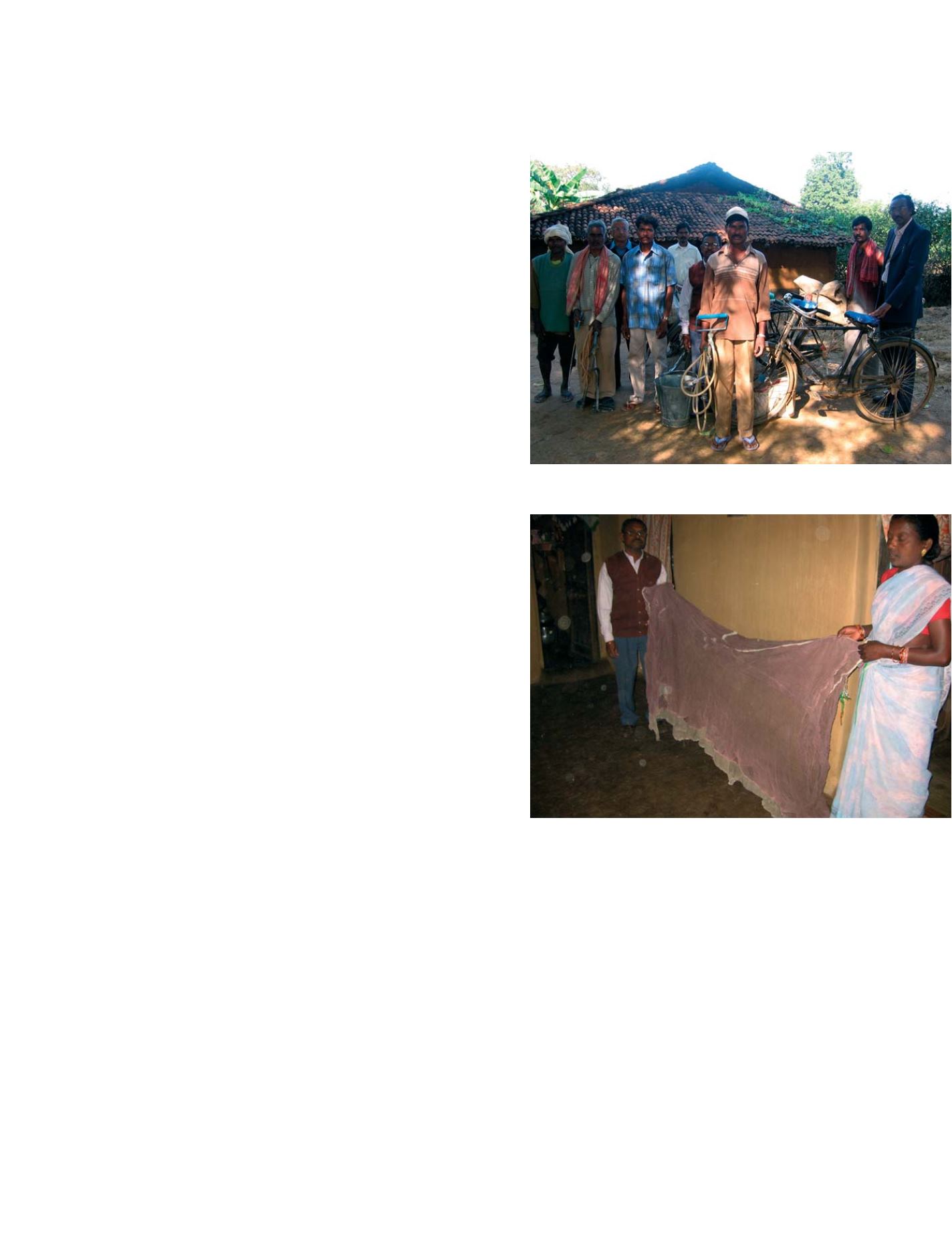

[
] 189
the human respiratory organs. Generally, it is believed
that particles having sizes less than 10 m (PM
10
) can
travel to the thoracic region, and particles with a diam-
eter of less than 2.5 m can travel to alveolic areas of
the lungs. It is estimated that there is an increase of
three per cent in respiratory diseases and of 0.5 per
cent in mortality per 10 μg/m
3
increase in PM
10
expo-
sure. However, these values need to be investigated for
developing countries as they are based on studies
carried out in developed world.
In South Asia, systematic air pollution monitoring
is being carried out by designated country government
agencies through their respective ambient air quality
monitoring networks established in representative
areas. These networks primarily monitor criteria pollu-
tants (like oxides of nitrogen and sulfur, SPM, PM
10
,
order to minimize the malaria incidences and increase the region’s
productivity.
Respiratory diseases
Rapid urbanization is exposing increasingly high populations to
outdoor pollution with serious health consequences, especially
related to pulmonary health in South Asia. The coexistence of old
and new technologies in the transport and industrial sectors, which
are considered to be the prime sectors responsible for pollution in
urban areas, masks the efficacies of policy interventions imple-
mented for amelioration of the ambient air quality in the region.
The increasing consumption patterns, commensurate with the
changing socio-economic status, further contribute to deteriora-
tion of air quality.
The World Health Organization (WHO)
4
has estimated that
urban air pollution is responsible annually for approximately
800,000 deaths and 4.6 million lost life years worldwide, and
almost two-thirds of these numbers are accounted for by Asia. But
the fact that these estimates are based mainly on the extrapolation
of research results carried out in mainly non-Asian countries under-
lines the importance of undertaking such studies in South Asia.
These estimates may entail significant ambiguities for the Asian
region because the nature of air pollutants, conditions and magni-
tude of exposure, health status and health care facilities are different
in Asia compared to other regions of world. Limited studies of air
pollutant impacts on human pulmonary health are available for the
developing world, which are mainly carried out in China with some
studies carried out in India, Singapore and Hong Kong.
5
The urban population of South Asia is growing at a very fast rate,
especially in the megacities where, for example, a growth rate of
more than 20 per cent per year has been observed between 1950
and 2000 for Delhi, Kolkata, Karachi and Dhaka. The ambient air
quality in most of these megacities is in poor shape, mainly due to
the presence of high suspended particulate matter (SPM). For
example, average concentrations of SPM have been reported to be
in range of 148-259 μg/m
3
for Delhi; 260-380 μg/m
3
for Kolkata;
233-318 μg/m
3
for Karachi; 663 μg/m
3
for Dhaka and about 250
μg/m3 for Kathmandu. These are much higher than the normal
prescribed values, with Indian standards identifying >210 g/m
3
SPM
concentration as the critical level for residential areas. The deteri-
oration of ambient air quality is occurring in South Asian countries
due to human-induced developmental activities, which are energy
intensive and result in the emissions of a number of trace gas species
and particulate matter. WHO has estimated that exposure of humans
to ambient air with more than a 100 μg/m
3
concentration of SPM
can cause cardiovascular mortality, respiratory mortality, lung cancer
and mortality due to acute respiratory infections in children.
Emissions of particulate matter directly impact human health by
affecting respiratory system. It is well established that exposure to
pollutants like SPM, SO, NO
x
, CO, O
3
, benzene etc. can have a
range of health effects,
6
especially if serious pollution episodes
occur. Both the physical (such as particle size) and chemical
compositions (e.g. presence of sulfate, nitrate, organic acids, metals,
black carbon, lead etc.) of aerosols are responsible for their impacts
on human health. The total SPM can travel deep into the human
respiratory system, depending on particle size. Different kinds of
aerosols have different effects – for example, sulfate aerosols have
been found to be highly toxic. These SPM particles also carry toxic
substances (like toxic metals), which on the particles that enter
Insecticide spray team for malaria mosquito control in an Indian village
Photo: Dr. R.C. Dhiman, NIMR
Social workers display a mosquito net for malaria control
Photo: Dr. R.C. Dhiman, NIMR
S
OCIETAL
B
ENEFIT
A
REAS
– H
EALTH
















